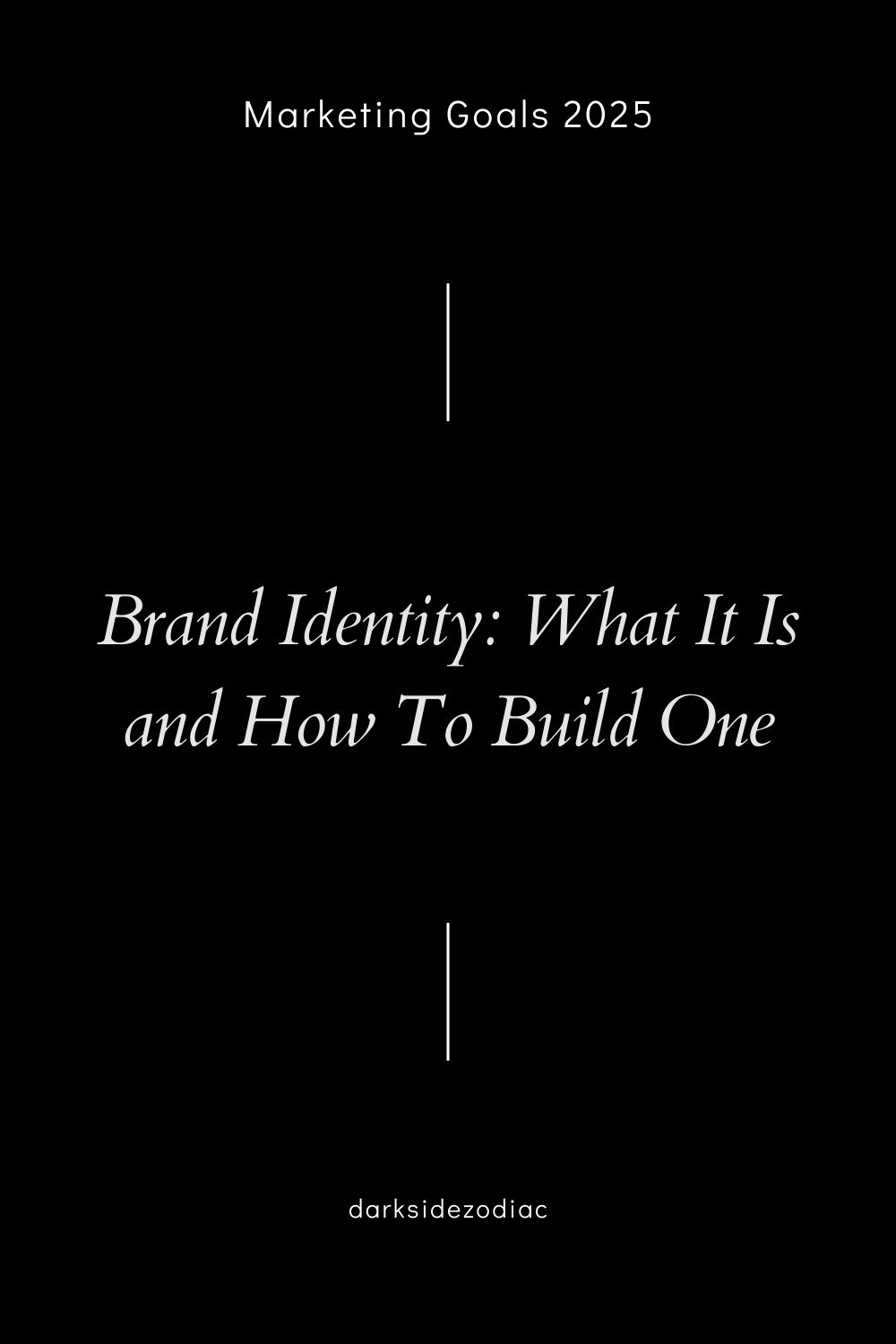In today’s competitive market, having a distinct and compelling brand identity is crucial for standing out and resonating with your target audience. Brand identity encompasses the visual, emotional, and experiential elements that define how your brand is perceived. It’s the personality of your business, articulated through various elements that make your brand memorable and meaningful. This article delves into what brand identity is, why it matters, and how to build one effectively.
What is Brand Identity?
Brand identity is the collection of all elements that a company creates to portray the right image to its consumer. It is the outward expression of the brand, including its name, logo, design, and overall aesthetic. It represents how a company wants to be perceived in the market and includes various components:
- Brand Name: The name of your company or product. It should be memorable, relevant, and resonate with your target audience.
- Logo: A visual symbol or emblem that represents your brand. It’s a crucial element of brand identity, often serving as the most recognizable feature.
- Color Palette: The specific colors associated with your brand. Colors evoke emotions and can significantly influence perception.
- Typography: The style and appearance of the text used in your branding materials. Consistent typography contributes to brand recognition and professionalism.
- Visual Style: The overall aesthetic, including imagery, graphic elements, and design style. It should reflect your brand’s personality and values.
- Brand Voice and Messaging: The tone and language used in communication with your audience. It should align with your brand’s personality and resonate with your target audience.
- Tagline or Slogan: A concise phrase that encapsulates the essence of your brand. It should be memorable and convey the brand’s value proposition.
Why Brand Identity Matters
- Differentiation: In a crowded marketplace, a strong brand identity helps differentiate your business from competitors. It makes your brand stand out and be easily recognizable.
- Consistency: A well-defined brand identity ensures consistency across all touchpoints. Consistency builds trust and helps establish a strong and cohesive brand presence.
- Emotional Connection: Brand identity helps create an emotional connection with your audience. It conveys your brand’s values, personality, and mission, fostering loyalty and engagement.
- Perceived Value: A strong brand identity can enhance the perceived value of your products or services. It can justify higher pricing and attract customers who align with your brand’s values.
- Customer Loyalty: When customers identify with your brand’s identity, they are more likely to become repeat customers and advocates. A compelling brand identity fosters loyalty and long-term relationships.
How to Build a Strong Brand Identity
Building a strong brand identity involves several key steps. Each step plays a role in creating a cohesive and compelling representation of your brand.
- Define Your Brand’s Core Values and Mission
Before creating your visual and verbal identity, it’s essential to define what your brand stands for. This includes:
- Core Values: Identify the fundamental principles and beliefs that drive your brand. These values should guide all aspects of your brand identity.
- Mission Statement: Craft a clear and concise mission statement that communicates your brand’s purpose and goals.
Tips:
- Engage with key stakeholders to ensure that the values and mission reflect the true essence of your brand.
- Consider conducting market research to understand what resonates with your target audience.
Understand Your Target Audience
Knowing your audience is crucial for building a brand identity that resonates with them. Conduct research to understand their preferences, needs, and values. This will help you tailor your brand identity to meet their expectations.
Tips:
- Develop customer personas to represent different segments of your audience.
- Gather insights through surveys, interviews, and social media analytics.
Develop Your Brand’s Visual Identity
The visual elements of your brand identity are critical for recognition and differentiation. Key components include:
- Logo Design: Create a logo that is simple, memorable, and versatile. It should reflect your brand’s personality and be easily recognizable across various platforms.
- Color Palette: Choose a color palette that aligns with your brand’s values and evokes the desired emotional response. Use colors consistently in all branding materials.
- Typography: Select fonts that complement your brand’s personality and are easy to read. Consistent typography reinforces brand recognition.
Tips:
- Work with a professional designer to ensure high-quality and effective visual elements.
- Test your visual identity across different mediums to ensure it remains effective and consistent.
Craft Your Brand Voice and Messaging
Your brand voice and messaging should reflect your brand’s personality and values. Consider the tone, language, and style that will best connect with your target audience.
- Brand Voice: Determine the tone and style of your communication. This could be formal, casual, friendly, authoritative, etc.
- Messaging: Develop key messages that communicate your brand’s value proposition and benefits. Ensure consistency in messaging across all channels.
Tips:
- Create a brand voice guide to ensure consistency in all written and spoken communications.
- Adapt your messaging for different platforms while maintaining the core brand voice.
Create Brand Guidelines
Brand guidelines are a comprehensive document that outlines how your brand identity should be used across various platforms and materials. It ensures consistency and helps maintain the integrity of your brand.
Key Components:
- Logo Usage: Guidelines for how to use the logo, including size, placement, and spacing.
- Color Palette: Specifications for using brand colors in different contexts.
- Typography: Rules for font usage, including sizes and styles.
- Imagery and Graphics: Guidelines for selecting and using images and graphic elements.
Tips:
- Distribute brand guidelines to all team members and partners to ensure adherence.
- Regularly update the guidelines to reflect any changes or new developments in your brand identity.
Implement Your Brand Identity Across All Touchpoints
Consistency is key to building a strong brand identity. Ensure that your brand identity is applied consistently across all touchpoints, including:
- Website: Design your website to reflect your brand’s visual identity and messaging.
- Social Media: Maintain a consistent brand voice and visual style across social media platforms.
- Marketing Materials: Ensure that brochures, business cards, advertisements, and other materials adhere to brand guidelines.
- Customer Service: Reflect your brand’s personality and values in customer interactions and support.
Tips:
- Regularly review and audit your brand’s presence across different channels to ensure consistency.
- Train employees and partners on brand guidelines and the importance of maintaining a consistent brand identity.
Monitor and Evolve Your Brand Identity
Building a brand identity is not a one-time task; it requires ongoing monitoring and evolution. Keep track of how your brand is perceived and make adjustments as needed.
Tips:
- Gather feedback from customers, employees, and stakeholders to assess the effectiveness of your brand identity.
- Stay informed about market trends and competitor activities to ensure your brand remains relevant and distinct.
Conclusion
Brand identity is a vital aspect of any business, shaping how your brand is perceived and experienced by your audience. By defining your brand’s core values, understanding your target audience, developing a strong visual identity, crafting a compelling brand voice, creating brand guidelines, implementing your identity consistently, and monitoring its impact, you can build a brand identity that stands out and fosters loyalty.
A well-crafted brand identity not only differentiates you from competitors but also creates a meaningful connection with your audience. It reflects who you are, what you stand for, and how you deliver value, ultimately driving success and growth for your business. Embrace the process of building and evolving your brand identity to unlock its full potential and achieve lasting impact in the marketplace.




